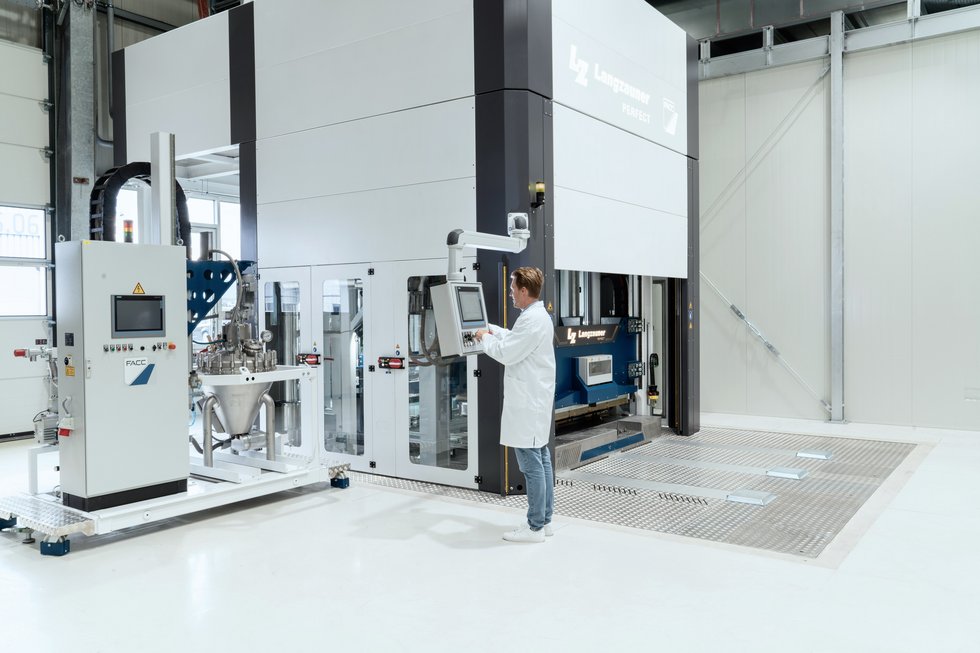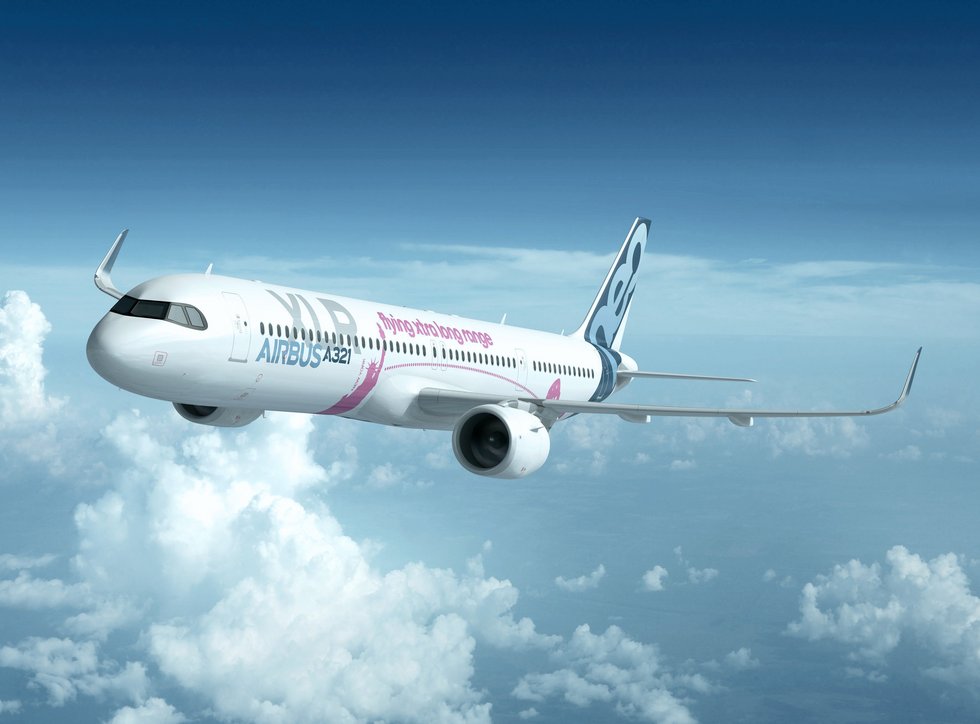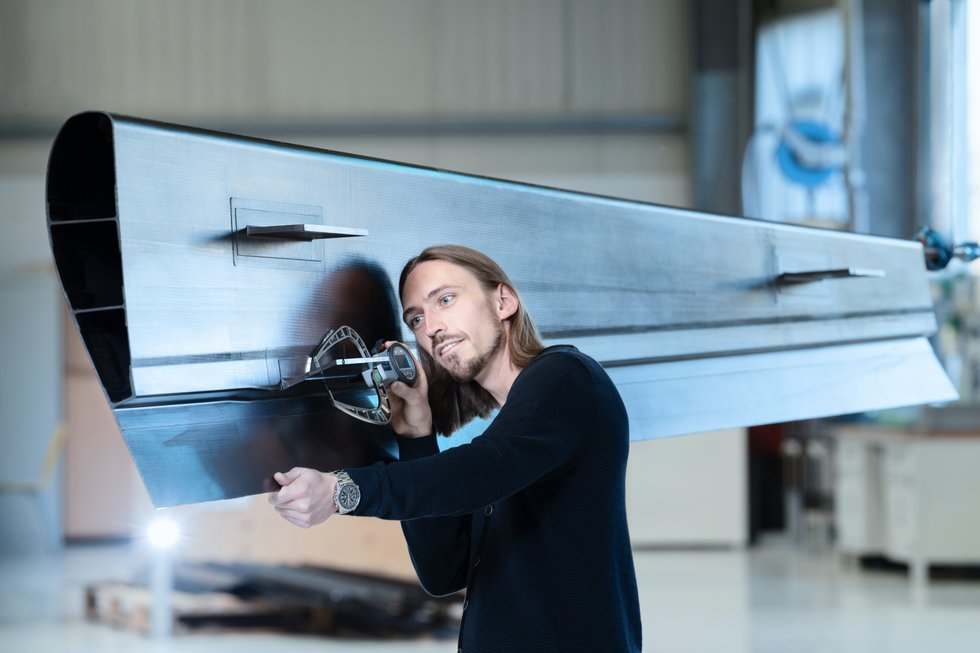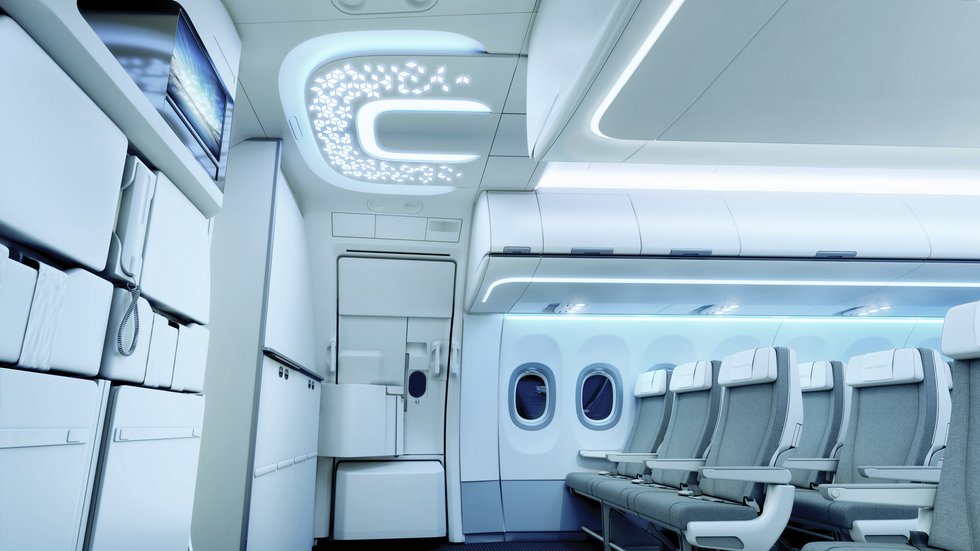Whether new biological materials, climate-neutral processes, entirely novel approaches and solutions – thinking in all directions and implementing the best is what FACC considers to be its maxim. Thinking green is the premise behind all of its actions.
With its innovative solutions, FACC has played a major role in shaping the development of the aircraft industry over the past decades. Around 500 employees in the Group are involved in research, technology and engineering. They research new materials and develop ever new, improved production processes. A remarkable research quota of 5 percent in 2020 is a clear indicator of the high value placed on innovation within the Group. In 2020 alone, FACC invested approximately EUR 20 million in new facilities for research and development, the industrialization of new products, and the development of novel materials and processes. A further and this time external proof of this was winning the Austrian Innovation Award. This prize is awarded to companies that can demonstrate an above-average number of new patent applications. FACC currently holds 370 patents and divisional applications worldwide.
High-performance thermoplastics: the materials of the future
One of the development projects FACC is currently pursuing focuses on high-performance thermoplastics. Since July 2020, the company has been conducting intensive research on these materials, which are not only easier to recycle, but could also pave the way for the production of aircraft parts without the need for screws or rivets in the future.

Airbus A321XLR: increased performance with parts from FACC
Meanwhile, components produced by FACC for the new long-haul Airbus aircraft are ready for series production. From 2023, the A321XLR is expected to offer non-stop flights covering distances of up to 8,700 kilometers for a maximum of 244 passengers. Compared with its predecessor, the A321neo, this represents a 15 percent increase in range. Furthermore, the environmental performance is also improving: Airbus anticipates a 20 percent reduction in fuel consumption per seat and annual CO2 savings of 5,000 tons per aircraft. With its structural components that are as light as a feather, FACC is making a significant contribution to this success. Specifically, the company is supplying the aft belly fairing, sharklets and outboard flaps for the new A321XLR. Moreover, major parts of the aircraft cabin, from the redesigned and modernized entrance area to the main cabin, were developed by FACC and are now produced in Austria.

Wing of Tomorrow: Airbus and FACC research the wing of the future
For two years now, FACC has been collaborating with Airbus on a completely new wing concept within the scope of the “Wing of Tomorrow” project. FACC is to contribute the wing box lower covers, flaps and the spoiler & droop panels. The aim is to produce these complex components in a faster, simpler and more cost-effective manner. A relevant production concept has already been developed for the wing box lower covers, and work on the flaps, which are to be manufactured by means of resin transfer molding, was continued in 2020. To date, this technique has only been employed in small-scale projects, and is now to be further developed for the five-meter-long flaps. Airbus and FACC hope that this will lead to a higher degree of integration, which will massively reduce subsequent work steps during assembly. At the end of 2020, the employees of FACC’s Research & Development, Tooling and Program Management departments involved in the project presented the first flap for the wing of the future.


Entrance area for the A320: a good first impression goes into production
The Airbus A320 is the world’s top-selling aircraft. 2020 marked the production launch of the new jet entrance area designed by FACC in plant 2. The redesign and development of the fittings took two years. A special highlight is the new “Hero Light”, a lighting system integrated into the ceiling elements that invites passengers to linger as soon as they enter the aircraft. Notwithstanding its noble design and robust construction, the new entrance area made of fiber composite materials is as light as a feather and thus contributes to saving fuel and reducing CO2 emissions. For Airbus, however, it offers a further major advantage: the installation is particularly cost-efficient as FACC delivers the entire entrance area in a container, ready for use, so that assemblers at Airbus merely have to clip the modules to the ceiling.